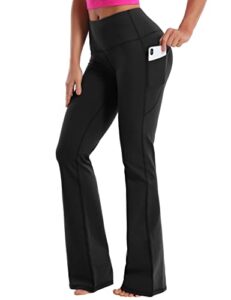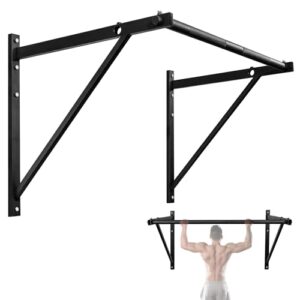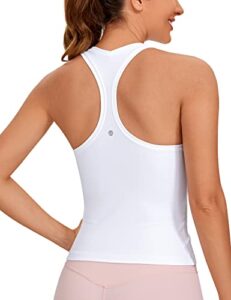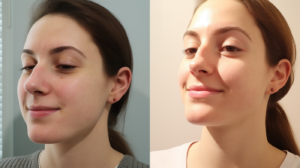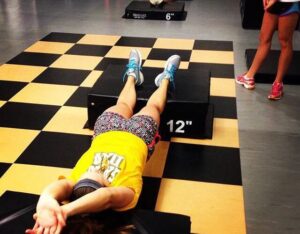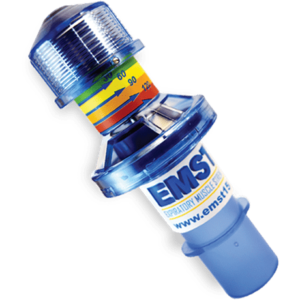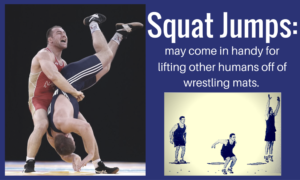Strength training for swimmers boosts performance and reduces injury risk. It focuses on building muscular endurance and power.
Swimmers must optimize their strength training to enhance their speed and efficiency in the water. Unlike bulk-building workouts, a swimmer’s strength regimen emphasizes exercises that promote flexibility and muscle balance. It involves movements that mimic in-pool motions, core stabilization, and lower-body exercises to support powerful kicks.
Developing upper-body strength is also crucial, as it contributes significantly to propulsion through the water. A thoughtful strength program is essential for competitive swimmers aiming to improve stroke techniques and overall athleticism. Such a routine not only prepares the muscles for the intense demands of swimming but also ensures a more robust and resilient body, capable of enduring the rigors of training and competition while minimizing the chances of injury.

Credit: www.amazon.com
Diving Into Strength Training For Swimmers
Elite swimmers know that winning requires more than just hours in the pool. Strength training plays a vital role. It builds muscle, increases power and boosts performance. Let’s plunge into how strength training boosts swimmers’ abilities.
Benefits Of Targeted Muscle Building
- Enhanced Performance: More muscle leads to faster swim times.
- Injury Prevention: Strong muscles protect joints from strain.
- Improved Endurance: Build stamina to maintain speed over distance.
- Better Technique: Supportive muscles help in performing strokes precisely.
The Swimmer’s Body: Key Muscle Groups
Swimmers use specific muscles to glide through water. Core, shoulders, and legs are crucial.
| Muscle Group | Importance | Exercises |
|---|---|---|
| Core | Stabilizes the body | Planks, Russian twists |
| Shoulders | Power for strokes | Pull-ups, shoulder presses |
| Legs | Boosts propulsive force | Squats, leg curls |
Knowing these groups helps tailor a swimmer’s gym routine. Strong legs kick harder. Powerful shoulders slice through water. A solid core keeps swimmers steady. Targeted training brings it all together.
The Science Of Muscle And Water
The Science of Muscle and Water sheds light on the hidden powers beneath a swimmer’s surface. In this aquatic environment, muscle performance varies greatly from land-based activities. Understanding the relationship between muscle strength and water dynamics is key for swimmers looking to enhance their speed and efficiency in the pool.
How Strength Translates To Swim Speed
Building muscle for swimmers isn’t just about bulk. It’s about crafting a machine perfectly tuned to cut through water. Muscles drive swimmers forward with every stroke. Stronger muscles push harder, and that means faster swimming.
Positive effects on swim speed:
- Improved stroke technique: Powerful muscles contribute to a more effective and efficient stroke.
- Faster acceleration: When starting or turning, muscle strength helps swimmers pick up speed quickly.
- Better endurance: Stronger muscles get tired less quickly, allowing for consistent speed over longer distances.
The Impact Of Resistance Training On Buoyancy
Resistance training can alter body composition, which affects buoyancy. Muscle is denser than fat, so increasing muscle mass can make a swimmer sink more easily. Yet, with the right training, swimmers can achieve a balance for optimal body position in water.
Key points on buoyancy and resistance training:
| Aspect | Impact |
|---|---|
| Buoyancy | Enhanced muscle can improve body alignment and floatation with the correct technique. |
| Body Composition | Lower body fat percentage and increased lean muscle may increase sink rate but aid in speed. |
| Technique Adaptation | Training helps adapt stroke mechanics to optimize performance with new muscle mass. |
Starting Blocks: Beginner’s Regimen
Welcome to ‘Starting Blocks: Beginner’s Regimen’, a guide designed for swimmers who are taking the plunge into strength training. Enhancing performance and reducing injury risk starts with building a solid foundation of strength, tailored specifically to the demands of the pool. Whether you’re diving into competitive swimming or aiming for personal improvement, the right beginner’s regimen can set the pace for future successes.
Assessing Your Baseline Strength
Before splashing into a new routine, it’s vital to determine where you stand. Using simple assessments, you can gauge your current strength levels. This step helps tailor your training to meet your specific needs. Key areas to focus on include core stability, lower body power, and upper body endurance. Document these initial measurements to track your progress over time.
Essential Exercises For Novices
Embarking on strength training as a novice requires guidance and a clear focus. Aim for exercises that offer the greatest benefits with the least complexity. Include these key movements in your regimen:
- Planks – Build core endurance critical for swim posture.
- Squats – Develop lower body strength for explosive starts and turns.
- Push-ups – Enhance upper body and core strength, simulating stroke movements.
Starting with bodyweight exercises allows for mastering form and building a strength base. Incorporate these exercises two to three times a week, gradually increasing resistance as your strength improves.
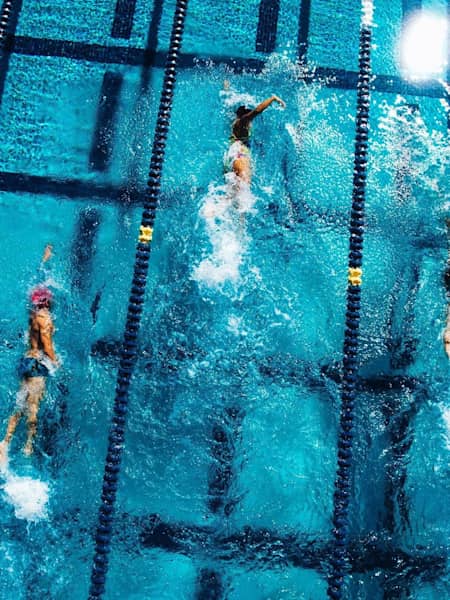
Credit: www.redbull.com
Advanced Techniques For Competitive Swimmers
Every swimmer aims to cut through the water with precision and speed. Advanced techniques for competitive swimmers turn good into great. The right strength training routine can make a significant difference. It can improve race times, and reduce injury risk.
Training For Power And Explosiveness
Explosive power is vital for a competitive edge. It elevates starts and turns. Strength training exercises optimized for swimmers enhance these movements.
- Box jumps develop leg power.
- Medicine ball slams build core explosiveness.
Include sprint swims in workouts to apply power in the pool. The rule is simple: train as you race. Practice fast to swim fast.
Incorporating Equipment And Weights
Proper equipment enhances strength training. Weights are not just for bodybuilders. They are for swimmers too.
| Exercise | Benefit |
|---|---|
| Pull-ups | Upper body strength | Deadlifts | Core and back stability |
| Kettlebell swings | Powerful hips and glutes |
Combine free weights with swim-specific gear like resistance bands and ankle weights. This strategy simulates swimming movements.
Swimmers reap the most rewards from dry-land and in-pool workouts. Tailoring strength training to individual needs is crucial. Listen to the body, and consistently challenge it.
Dryland Training Essentials
Swimmers know the pool is their main arena. But strength off the waves matters too. Dryland training boosts performance, builds muscle, and reduces injury risk. We dive into exercises out of the water and cross-training strategies swimmers can adopt for peak condition.
Exercises Out Of The Water
Building strength outside the pool translates to faster, more efficient swims. Here are top dryland exercises swimmers should include:
- Push-ups – Enhance upper body and core strength.
- Squats – Develop powerful legs for kicking.
- Planks – Improve core stability important for swimming posture.
- Medicine Ball Throws – Build explosive power, crucial for starts and turns.
Swimmers should aim for consistency. Include these exercises in weekly routines for optimal results.
Cross-training Strategies
Swimming demands a lot from your body. Cross-training is key for a well-rounded athlete. Here’s how to mix it up:
| Activity | Benefits |
|---|---|
| Yoga | Increases flexibility and mental focus. |
| Cycling | Boosts leg strength without joint stress. |
| Running | Enhances cardiovascular endurance. |
Include these activities weekly for a balanced training approach.
Nutrition For Muscle Growth
When it comes to building strength in the pool, what you eat is key. Just like a car needs the right fuel to run, swimmers need proper nutrition for muscle growth. This means focusing on the right combination of proteins, carbs, and fats, plus keeping up with hydration. Let’s dive into how to nourish those muscles for peak performance.
Macronutrients And Micronutrients For Swimmers
Macronutrients are the big players in your diet. They give you energy and help rebuild muscles. Swimmers need a balance:
- Proteins – They rebuild and repair muscle tissue after intense swims.
- Carbohydrates – They fuel your swimming sessions and help with recovery.
- Fats – They are crucial for long-lasting energy.
Micronutrients are the vitamins and minerals that support overall health. These include:
| Vitamin/Mineral | Function | Food Source |
|---|---|---|
| Iron | Oxygen transport | Red meat, spinach |
| Calcium | Bone strength | Dairy, kale |
| Vitamin D | Calcium absorption | Sunlight, eggs |
| Vitamin C | Immune health | Oranges, peppers |
Hydration And Its Role In Performance
Hydration is not just about water. It’s a vital part of any swimmer’s nutrition plan. Water helps your muscles work and keeps your body cool. It also aids in digestion and nutrient absorption. Swimmers should remember:
- Drink water throughout the day, not just during practice.
- Include electrolytes, like sodium and potassium, after intense workouts.
- Avoid sugary drinks; they don’t help with hydration.
- Dehydration can lead to cramps and fatigue, so keep a water bottle handy.
By staying well-hydrated, your body will perform better and recover faster. This translates to stronger, more efficient strokes every time you hit the water.
Periodization: Timing Your Training
Strength training for swimmers is more than just building muscle. It’s about smart timing with periodization. This method breaks your training into phases. Each phase focuses on different goals. It helps swimmers reach peak performance right when they need it.
Cycles Of Training Intensity
Periodization divides the swimming season into cycles. Think of it as a calendar for your muscles. Here’s how it works:
- Base phase: Build endurance with moderate weights and high reps.
- Strength phase: Increase weight to boost muscle power.
- Power phase: Combine strength and speed with explosive exercises.
| Phase | Focus | Intensity |
|---|---|---|
| Base | Endurance | Low-Medium |
| Strength | Muscle Power | Medium-High |
| Power | Explosive Speed | High |
This structure keeps your body always guessing. And always improving.
Tapering Before Competition
Before big races, swimmers reduce training intensity. This is called tapering. Your body heals and stores energy.
- Reduce weight and reps in gym sessions.
- Focus on technique to keep muscles engaged.
Tapering needs careful timing. Start too soon, and you might lose strength. Start too late, and you might not fully recover.
By planning your training, you can swim your fastest exactly when it counts.

Credit: blog.myswimpro.com
Recovery And Injury Prevention
Swimmers need strong muscles to glide through water. But muscles need care, too. To swim fast and avoid injury, swimmers must recover well. Strength training is hard work. It makes muscles tired and sometimes sore. With the right recovery, muscles heal and grow. This post dives into how rest and stretching can keep swimmers healthy and strong.
Rest Days And Sleep Importance
Rest days are vital for swimmers. They let muscles repair and grow. Without rest, muscles can’t get stronger.
Good sleep is as crucial as swimming practice. Aim for 8-10 hours every night. Sleep helps the body heal.
- Sleep boosts performance. Minds stay sharp and bodies quick.
- It wards off illness. A well-rested body can fight germs better.
- During sleep, muscles rebuild. Tissues fix themselves.
Stretching And Flexibility Work
Swimmers should stretch often. Stretching keeps muscles flexible. Flexible muscles work well and don’t get hurt easily.
Flexibility and recovery go hand in hand. Flexible muscles store energy better. That means more power in the pool.
- Do dynamic stretches before swimming. They warm up muscles.
- Save static stretches for after workouts. They cool down muscles.
- Regular yoga can make swimmers bendier and stronger.
Monitoring Progress And Adjusting Workouts
Every swimmer wants to get better, stronger, and faster. Strength training plays a vital role in this journey. Monitoring progress and adjusting workouts is critical. It ensures swimmers keep improving without hitting a dead-end. Let’s dive into how to track fitness goals and handle performance changes.
Setting And Tracking Fitness Goals
Goal setting gives direction to a swimmer’s training routine. Clear, measurable goals make progress tangible. For tracking, nothing beats a good old training log. It should include:
- Workout details: Exercises, sets, reps, and rest periods.
- Performance metrics: Times, distances, and swim stroke efficiency.
- Body measurements: Weight, muscle mass, and body fat percentage.
To make monitoring more effective, use digital tools like apps and spreadsheets. They can help visualize progress with graphs and charts. Regularly review and update goals based on achievements.
Adapting To Plateaus And Performance Dips
Progress is not always linear. Swimmers may hit plateaus or face temporary performance dips. It’s normal. The key is to adapt. Consider these strategies:
| Scenario | Strategy |
|---|---|
| Plateau | Alter workout intensity, volume, or technique |
| Performance Dip | Assess recovery, nutrition, and stress levels |
Bold changes may be needed sometimes. Try new exercises or switch between power and endurance training. Continuously assess the results and make the needed adjustments. Coaches can offer great insight during these times. Communication with them is key. Remember, a plateau can lead to a breakthrough. Stay patient, stay focused.
Tales From The Pool: Successful Swimmers’ Routines
Every champion has a story. Diving into successful swimming routines reveals a world of rigor, dedication, and smart strength training. The right workout can make or break race day performance. Here, we unveil the backstroke-to-butterfly journey of those who’ve carved their paths in the world’s pools.
Case Studies And Training Logs
Real swimmers, real success stories. Detailed case studies serve as a rich source of inspiration and guidance. Take a glimpse into the training logs of athletes who have mastered the art of swimming with these elements:
- Workout frequency: Understand the value of consistency.
- Strength exercises: Learn which muscle groups empower every stroke.
- Recovery patterns: See how rest plays a crucial role.
| Swimmer | Training Days/Week | Key Exercises | Recovery Techniques |
|---|---|---|---|
| John Doe | 6 | Pull-ups, Deadlifts, Squats | Cold water immersion, Foam rolling |
| Jane Smith | 5 | Lat pull-downs, Leg press, Core workouts | Active stretching, Sleep optimization |
Interviews With Coaches And Athletes
Behind every swimmer’s success is a coach’s vision. Interviews with seasoned coaches shed light on personalized training methodologies. Top athletes also share insights into their structured routines, showcasing a blend of rigorous strength training and nuanced techniques.
- Expert perspectives on swimming biomechanics.
- Innovative strength-building strategies.
- Mental fortitude in training regimens.
“Building strength isn’t just about lifting weights; it’s about crafting a swimmer’s body that’s as adaptable in water as it is powerful.” – Coach Anna Lee
Frequently Asked Questions On Strength Training For Swimmers
How Do You Build Strength For Swimming?
To build strength for swimming, engage in regular dry-land exercises such as pull-ups, squats, and core workouts. Incorporate resistance training with weights or bands. Practice swimming drills to enhance technique and power. Gradually increase workout intensity and consistency for optimal results.
How Many Times A Week Should A Swimmers Lift Weights?
Swimmers generally should lift weights 2-3 times per week to balance strength training with in-pool workouts. Consistency is key for muscle adaptation and overall performance enhancement.
What Is The Best Workout For Swimmers?
The best workout for swimmers typically includes a mix of pool exercises and dryland training, focusing on endurance, strength, and technique. Common activities are interval swim sets, resistance exercises, core workouts, and flexibility sessions to improve overall performance.
Did Michael Phelps Lift Weights?
Yes, Michael Phelps incorporated weightlifting into his training regimen to build strength and improve performance in swimming competitions.
What Are The Benefits Of Strength Training?
Strength training can enhance a swimmer’s power, endurance, and speed, leading to better performance and reduced injury risk.
How Often Should Swimmers Do Strength Training?
Swimmers can benefit from including strength training 2 to 3 times per week alongside their swimming routine for optimal results.
Which Strength Exercises Improve Swimming Performance?
Exercises such as pull-ups, deadlifts, squats, and shoulder presses target key muscles used in swimming and can improve overall performance.
Conclusion
Embarking on a strength training journey can elevate a swimmer’s performance to new heights. It builds endurance, enhances speed, and reduces injury risks. Remember, consistency and proper form are key. Dive into strength training and watch your swimming prowess surge forward.
Ready to make waves? Your next personal best awaits!


